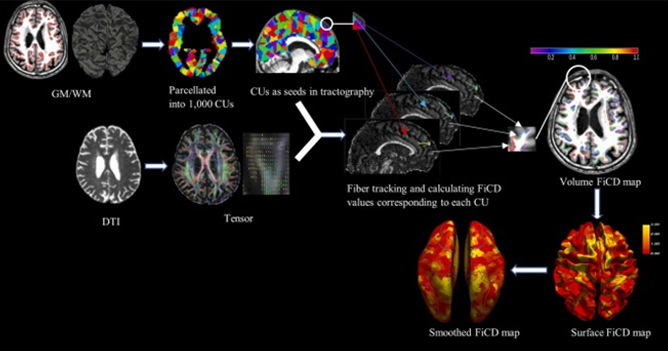Multimodal brain MRI analysis
Subcortical stroke induces widespread connectivity changes between cortical and subcortical regions, which may underpin the ensuing behavioural dysexecutive symptoms.
This study therefore investigated the cortical structural connectivity related to behavioural dysexecutive symptoms using fibre connectivity density (FiCD) mapping, an approach which combines white matter (WM) fibre tractography and cortex reconstruction.
The relationships between cortical structural connectivity of significant clusters and its corresponding cortical thickness (CT), and clinical variables were also evaluated based on region-of-interest analysis.
Sixty-four subcortical stroke patients with high-resolution T1-weighted imaging and diffusion tensor imaging were enrolled and the behavioural dysexecutive symptoms were assessed using the dysexecutive questionnaire.
The FiCD of the left superior parietal gyrus was positively associated with cognitive executive processing (CTT1 time, r = 0.570, p = 0.047; CVFT total correct, r = 0.582, p = 0.047; CVFT total response, r = 0.605, p = 0.040). Similarly, the FiCD of the right superior parietal gyrus was also positively associated with cognitive executive processing, (CTT1 time, r = 0.639, p = 0.034). Conversely, negative correlations were observed between the FiCD and CT of the right (r = -0.612 p = 0.045) superior parietal gyrus.

Project team
- Catherine Shi (publishing as Lin Shi)
- Lisha Wang
- Edward S. Hui
- Yan Liang
- Wai-Kwong Tang